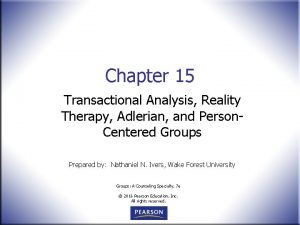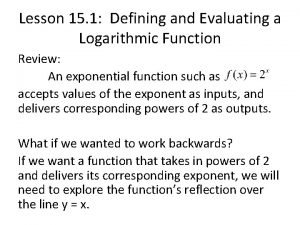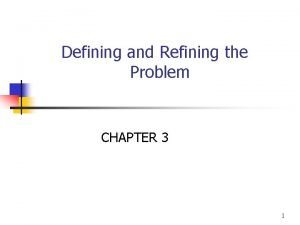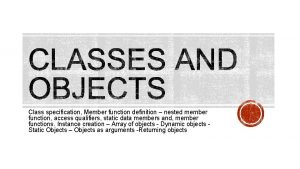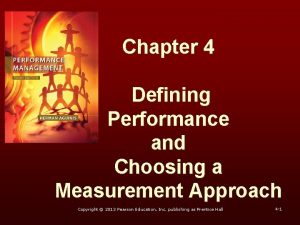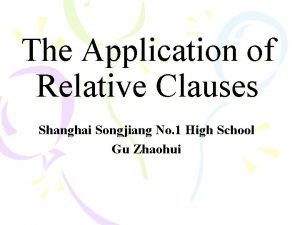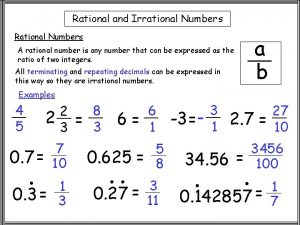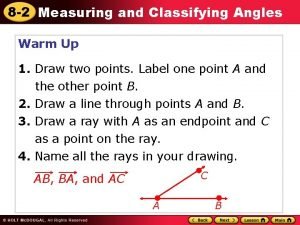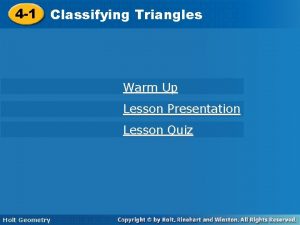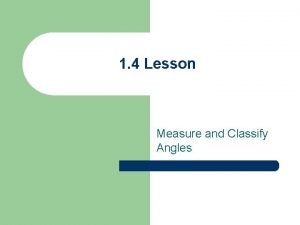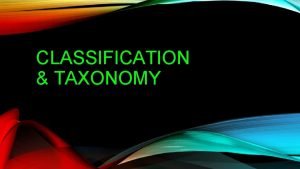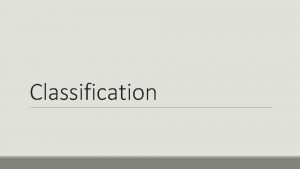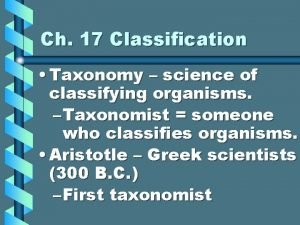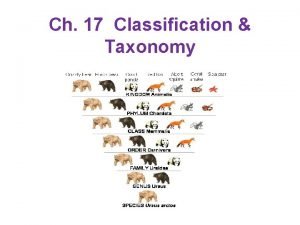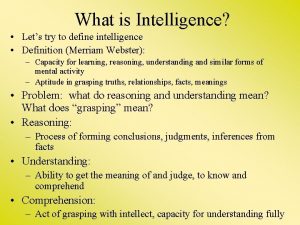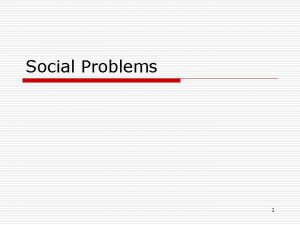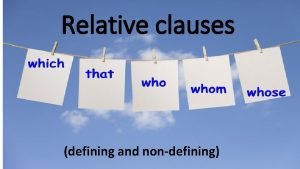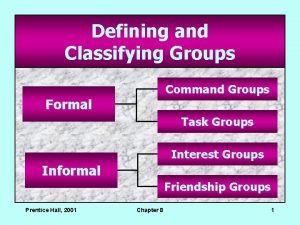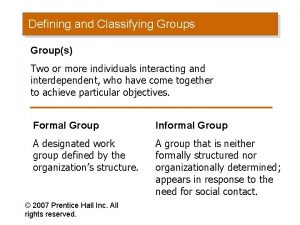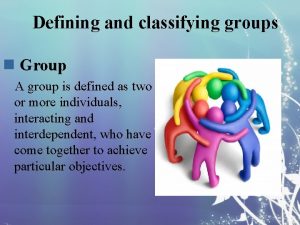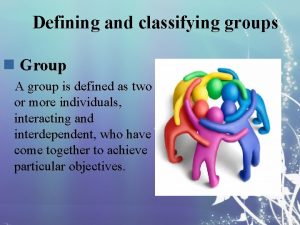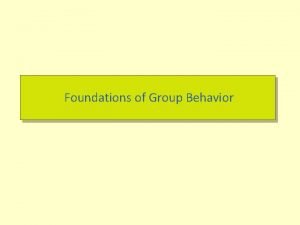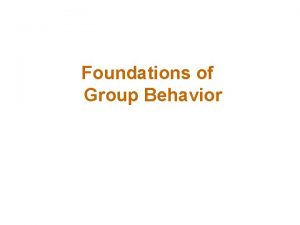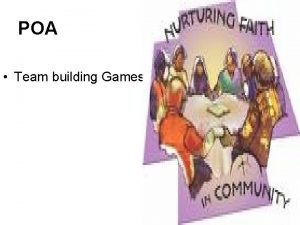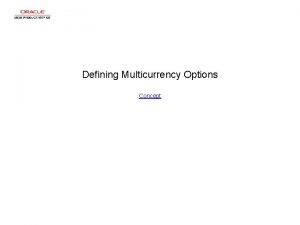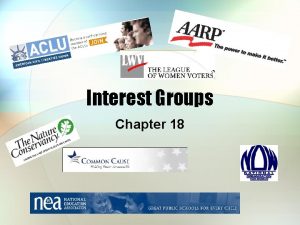Defining and classifying groups n Group A group














































- Slides: 46

Defining and classifying groups n Group A group is defined as two or more individuals, interacting and interdependent, who have come together to achieve particular objectives.

Groups can be formal or informal. n FORMAL GROUPS The groups which are defined by organization’s structure, with designated work assignments and tasks.

INFORMAL GROUPS The alliances that are neither formally structured nor organizationally structured. FOR EXAMPLE; Three employees from different departments who regularly eat lunch or coffee together.

Classification of groups Further sub classification of groups as; n Command groups n Task groups n Interest groups n Friendship groups

COMMAND GROUP n A group composed of the individuals who directly report to the given manager. Like; elementary school principal and her teachers.

TASK GROUPS n People working together to complete a job task. Like; college accused of a campus crime.

INTEREST GROUPS n People working together to attain a specific objective with each is concerned.

FRIENDSHIP GROUPS n Groups often develop because the individual members have one or more common characteristics. Like; social alliances.

WHY DO PEOPLE JOIN GROUPS?

WHY DO PEOPLE JOIN GROUPS ? By joining the group following are the factors : - n n n Security Status Self Esteem Affiliation Power Goal Achievement.

Security: By joining the groups, individuals can reduce the insecurity of standing alone. People can feel stronger, have fewer self doubts.

Status: In a group, that is view as important to provides recognition and status for its members.

Self-Esteem: Groups can provide people with feeling of self worth. In addition to conveying status to those outsides the group.

Affiliation (Relationship): Groups can fulfill the social needs. People enjoy the interaction that comes with groups. On-the-Job interactions, its fulfill the need for affiliation.

Power: What cannot be achieve individually often becomes possible through group action. There is the power in numbers.

Goal Achievement: There are times when it takes more than one person to accomplish a particular task—there is a need to pool talents, knowledge and power in order to complete a job.

WHAT ARE THE EXTERNAL CONDITION IMPOSE ON THE GROUP? 1. Organization strategies: v How to improve the structure? v Quality increase. v Minimize the cost. v Profitability increase.

2. Authority Structure: . v who report to whom, direct report or level vise reporting. 3. Formal Rules: v What are the rules and regulation? v Job description.

4. Resources: v In Resources, money is required to popup the problems with large and small resources. 5. Employees Selection Process v What are the characteristics of an employee to require or join a group.

6. Performance Evaluation: Check the performance evaluation: v Individually v Group vise. 7. Reward System: v To encourage the employee by providing the reward system.

8. Culture: v In groups, people are differ with each other due to the culture differences. 9. Physical Work Setting: v Based on the group environment to achieve the goals.

Positive Work Environment

Stages of Group Development

5 Stages Of Group Development The five distinct stages groups go through : 1: Forming 2: Storming 3: Norming 4: Performing 5: Adjourning

1: Forming Stage q It is characterized by a great deal of uncertainty about the group’s purpose, structure, responsibilities, leadership and objectives.

2: Storming Stage q It is characterized by intrgroup conflict. q There is conflict over who will control the group. q Team members open up with each other and confront each other’s ideas and perspectives. q But, when this stage is complete, there will be clear hierarchy of leadership within the group.

3: Norming Stage v Close relationships develop and the group demonstrates Cohesiveness. v Bench and standards are set to and members try to achieve those standards. v Enthusiasm is high. v Accept ground roles, rules, and individuality of fellow members.

4: Performing Stage At this stage, we have to maximize our performance. At this point, the structure is fully functional and accepted. Group members start getting to know and understand each other to performing the task. Begin performing by diagnosing, problem solving and implementing changes.

5: Adjourning Stage The final stage of group development for temporary groups, characterized by concern with wrapping up activities rather than task performance.

Weaknesses of 5 Stages Model v Many interprets of the 5 stages model have assumed a group becomes more effective through the first 4 stages. v High levels of conflict may be conductive to high group performance. v Sometimes we achieve group effectiveness at the II or III stage but sometimes after reach the IV stage we cannot achieve or increase the group effectiveness. v Therefore, even strongest proponents of this model do not assume all groups follow its 5 stage process or we can’t say that stage 4 is always preferable.

Group Properties n Group Properties are those factors which ensure that a group is capable and skilled enough to accomplish the task assigned.

Group Properties Some of the basic group properties are n Roles n Norms n Status n Group size n Group cohesiveness

Roles n Shakespeare said “All the world is a stage, and all the men and women merely players”

Roles n Role means the expected behavior pattern attributed to someone occupying a given position in a social unit. n In our society, each individual is assigned more than one role which requires more than one behavior and causes Role Diversity.

Components of Roles Group Role can be understood in four way which are n Role Identity n Role perception n Role expectation n Role conflict

Role Identity n Certain attitudes and actual behavior are consists with a role and they create the role identity. n People have the ability to shift roles rapidly when they recognize that a situation and it’s demand clearly required major changes.

Role perception n Role perception refers to our view of how we are supposed to react in a given situation. n We adapt certain type of behaviors depending on our believe that how should we response.

Role expectation n This component refers to the expectation of people around us, from us. n In other words it signifies the expectation that people have from us to react in a certain way.

Role Conflict n When more than one role is assigned to an individual, it demands different responses according to each role, this creates the problem of role conflict.

Properties 2 and 3 n Norms n Status

Norms Definition “ Acceptable standard of behavior that are shared by the group members”

Norms n. It guides to the members of group n. Means of influencing the group behavior n. It vary from, culture to culture n. Different groups, communities and societies have different norms

Types of Norms n. Performance norms n. Appearance norms n. Social arrangement norms n. Resource allocation norms

Status Definition “A socially defined position or rank given to groups or group members by others”

Status n It differentiate its members n To understand human behavior

What Determines Status ? n. Power a person wields over others n. Person’s ability to contribute to groups’ goals n. An individual personal characteristics
 Defining non defining relative clause
Defining non defining relative clause Relative clauses defining and non defining
Relative clauses defining and non defining Relative clauses defining and non defining
Relative clauses defining and non defining Defining relative clause meaning in telugu
Defining relative clause meaning in telugu Non defining relative clause
Non defining relative clause Relative clauses where which farkı
Relative clauses where which farkı How are ethnic groups and religious groups related
How are ethnic groups and religious groups related Transactional analysis group therapy
Transactional analysis group therapy 15-1 defining and evaluating a logarithmic function
15-1 defining and evaluating a logarithmic function Definition of research objectives
Definition of research objectives Defining performance and choosing a measurement approach
Defining performance and choosing a measurement approach Defining and refining the problem
Defining and refining the problem Nesting of member function
Nesting of member function Defining performance and choosing a measurement approach
Defining performance and choosing a measurement approach Defining and debating america's founding ideals
Defining and debating america's founding ideals Defending and non defining relative clauses
Defending and non defining relative clauses Classify the following triangle as acute obtuse or right
Classify the following triangle as acute obtuse or right Importance of scientific name
Importance of scientific name Example of rational numbers
Example of rational numbers Classify by degree
Classify by degree Whole number integer rational number
Whole number integer rational number Measuring and classifying angles
Measuring and classifying angles Classifying triangles activity
Classifying triangles activity Examples of scientific skills
Examples of scientific skills Classifying and exploring life lesson 2 answers
Classifying and exploring life lesson 2 answers Classifying elements compounds and mixtures
Classifying elements compounds and mixtures Measuring and classifying angles
Measuring and classifying angles Chapter 20 patient collections and financial management
Chapter 20 patient collections and financial management Comparing and classifying
Comparing and classifying Exploring and classifying life answer key
Exploring and classifying life answer key Classifying and exploring life
Classifying and exploring life Fungi cell
Fungi cell Discipline of classifying and naming organisms
Discipline of classifying and naming organisms Canis latrans classification
Canis latrans classification Exploring and classifying life
Exploring and classifying life Discipline of classifying and naming organisms
Discipline of classifying and naming organisms Liger taxonomy
Liger taxonomy Defining intelligence
Defining intelligence The defining moment in greek history is the wars
The defining moment in greek history is the wars Alligator phylum and symmetry
Alligator phylum and symmetry Importance of textbook
Importance of textbook Lord capulet defining quotes
Lord capulet defining quotes Lady montague defining quotes
Lady montague defining quotes Nondefining relative clause
Nondefining relative clause Defining poverty
Defining poverty Program block and control section
Program block and control section Definition of leadership and management
Definition of leadership and management







